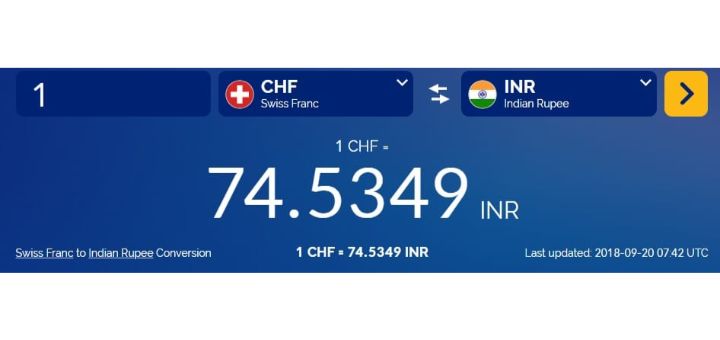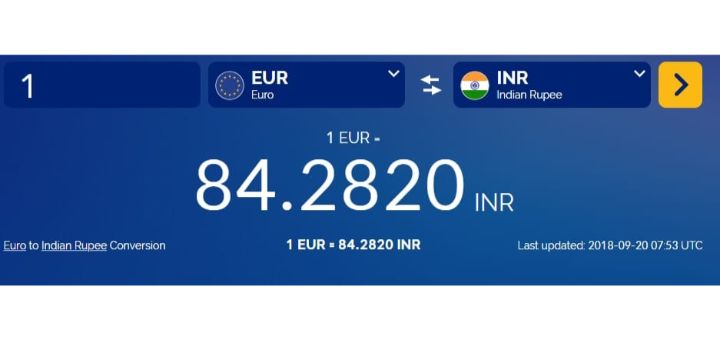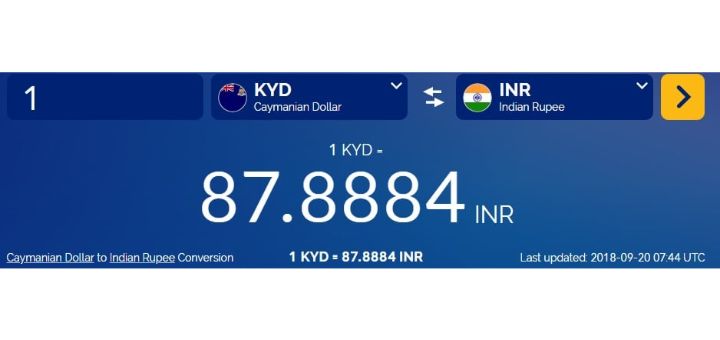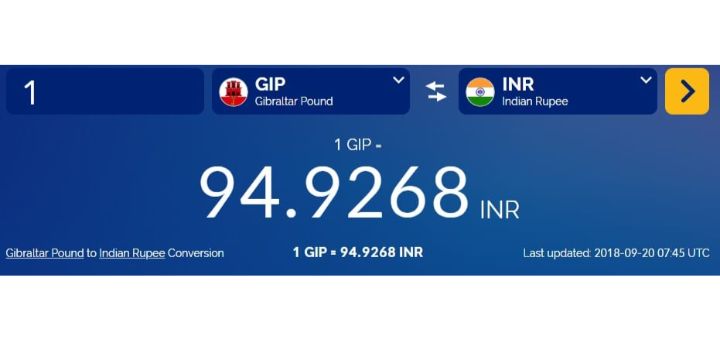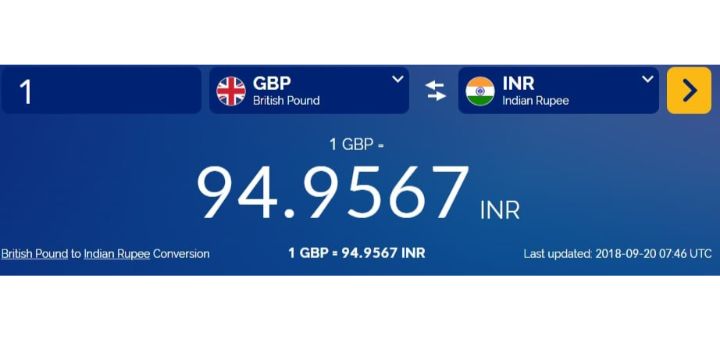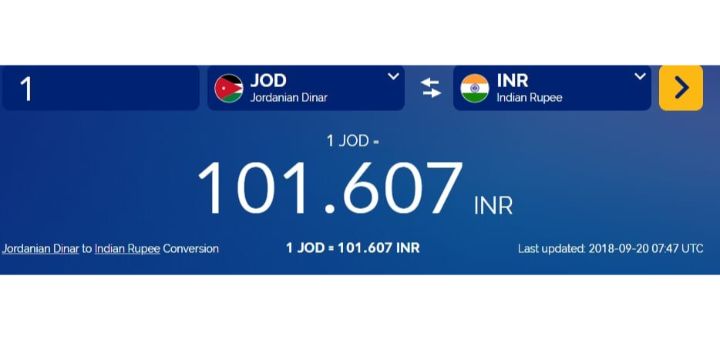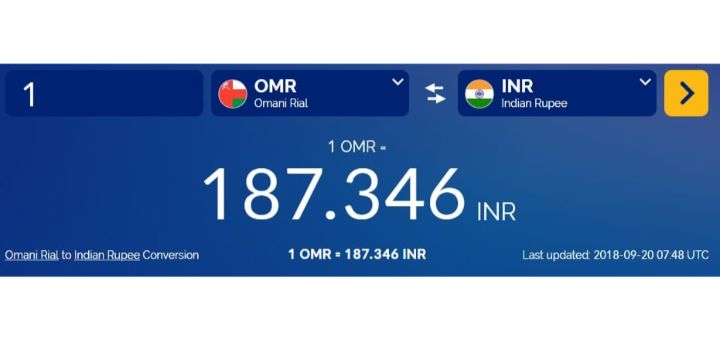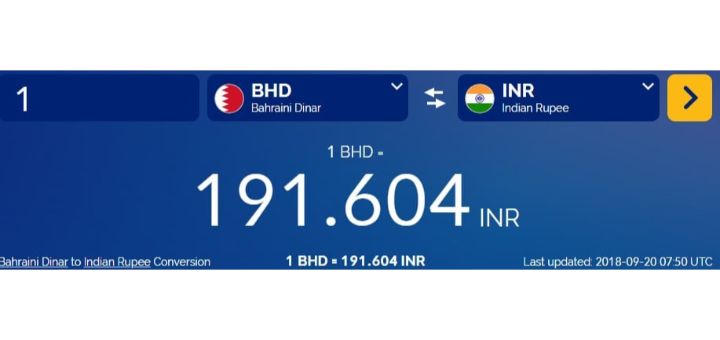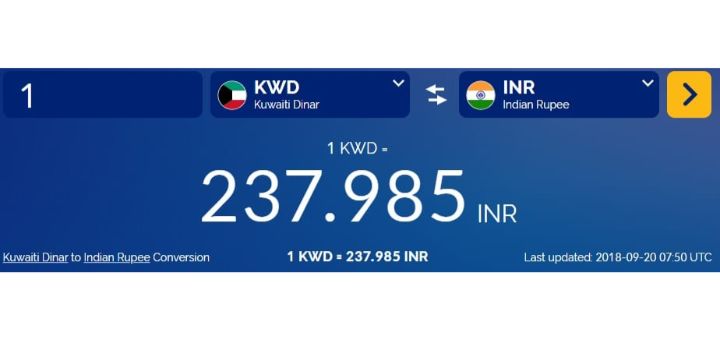Updated on 24, October 2018. Highest Currency List changed. Gibraltar Pound has moved up a place.
Highest Currency in the World (Top 10)in 2018 (Rates as of 24, October 2018)
Update: Since INR depreciated against USD and few other currencies, we have updated the rates…
These are the top 10 highest currency in the world with respect to the value in Indian Rupees. The strength or popularity of a currency is an entirely different thing. A Euro or the USD holds more value, is traded more and is used in more countries than the Kuwaiti Dinar even though KWD is valued as the highest currency in the world. Similarly, currencies like the Japanese Yen or Chinese Yuan don’t feature in any top 10 highest currency in the world list but they are still traded more than some other currencies in this list. So this list signifies the numerical value of a currency with respect to Indian Rupee and not its trade value.
Highest Currency in the World in 2018 Table format
| S.No | Currency | Country | Value in Indian Rupees |
|---|---|---|---|
| 1 | Kuwaiti Dinar (KWD) | Kuwait | 241.13↑ |
| 2 | Bahraini Dinar (BHD) | Bahrain | 194.15↑ |
| 3 | Omani Rial (OMR) | Oman | 190.13↑ |
| 4 | Jordanian Dinar (JOD) | Jordan | 103.16↑ |
| 5 | Gibraltar Pound (GIP) | Gibraltar | 95.07↑ |
| 6 | Great Britain Pound (GBP) | Great Britain | 94.81↓ |
| 7 | Caymanian Dollar (KYD) | The Cayman Islands | 87.84↓ |
| 8 | Euro (EUR) | The European Union | 83.70↓ |
| 9 | Swiss Franc (CHF) | Switzerland | 73.41↓ |
| 10 | US Dollar (USD) | USA | 73.18↑ |
Source: BookMyForex Rates, Xe.com
Highest Currency in the World in 2018 in Pictures
10 – US Dollar
9 – Swiss Franc (CHF)
8 – Euro (EUR)
7 – Caymanian Dollar (KYD)
6 – Gibraltar Pound (GIP)
5 – Great Britain Pound (GBP)
4 – Jordanian Dinar (JOD)
3 – Omani Rial (OMR)
2 – Bahraini Dinar (BHD)
1 – Kuwaiti Dinar (KWD)
Currency-A brief history
Money or currency started as a form of receipt. The first use of currency was in the form of grain. This exchange of grain started in Ancient Mesopotamia and Ancient Egypt. With the passage of time, people started to use metals representing symbols instead of grain. Metals like copper represented the value of the grain stored in a Temple. However, it was not possible to safely store the large amounts of grain as it was prone to robbery. People began to think of alternatives and that was the start of coins replacing grain as currency.
Check the live rates of 29 top currencies that you can exchange at BookMyForex
The first money came in the form of coinage and it was a mix of copper, silver and gold. The first use of coins as a form of currency started in ancient India where Mahajanapadas used coins as a form of exchange.
Then came paper money and its use can be traced to premodern China. Tang Dynasty and later Song Dynasty in order to get rid of a large number of coins came up with paper money. Paper money started as a form of depositing of the heavy coins by merchants with wholesaler shops and receiving a receipt for it. These receipts were promissory notes. Though these notes were in use in a very small region. Song Dynasty in the late 10th century circulated the paper notes amongst the traders and that was the start of currency. The currency or coins as a medium of exchange did occur in the medieval Islamic world in the 7th century too. In Europe, paper money was started in 1661 by Sweden.





